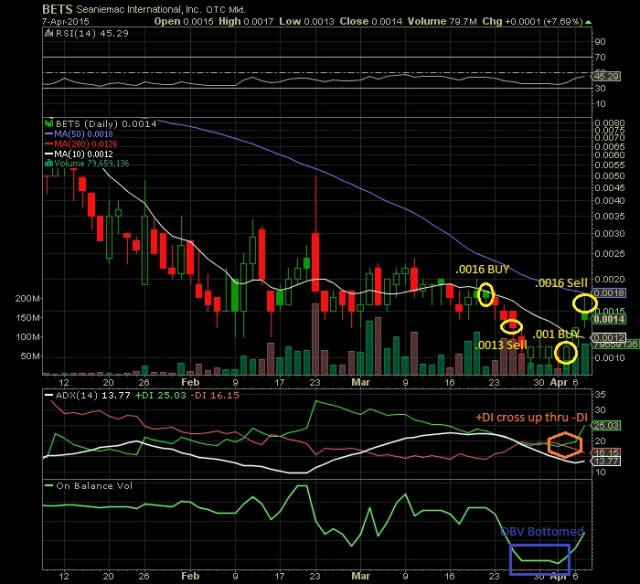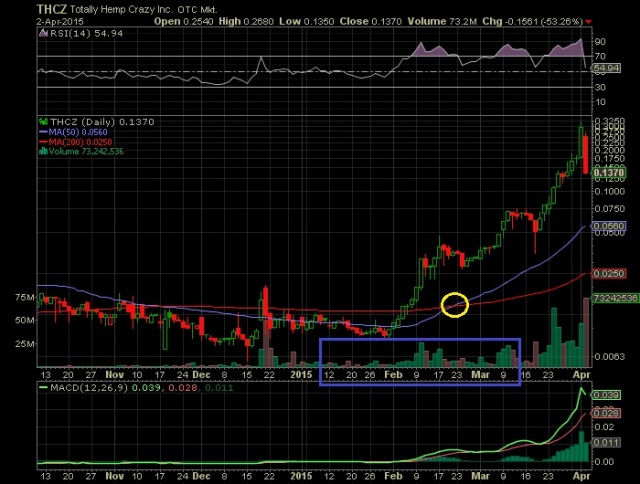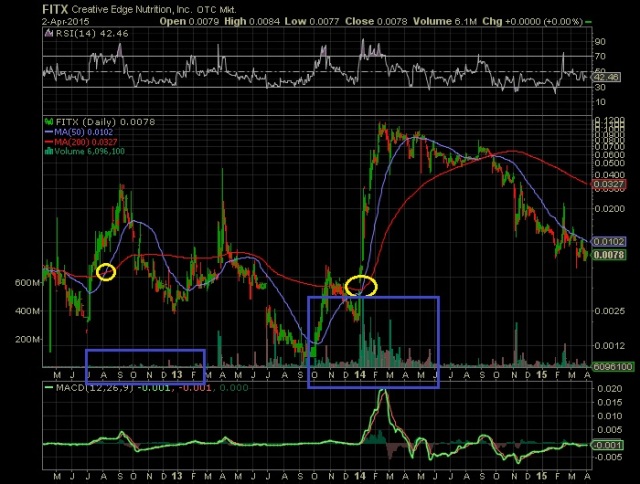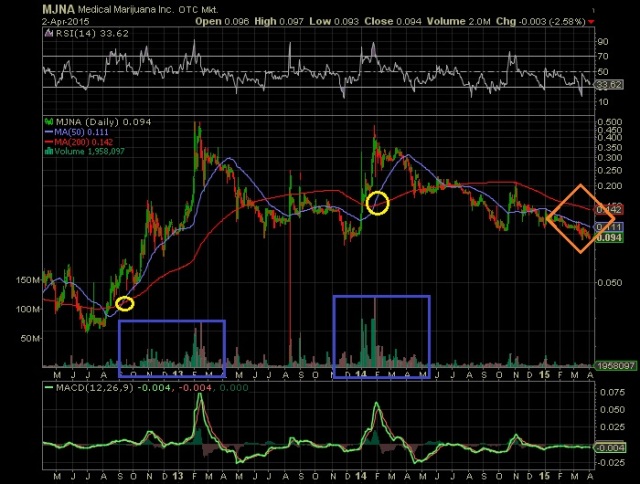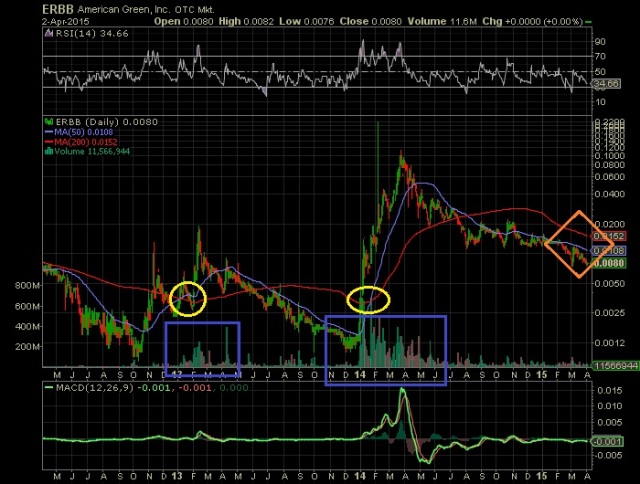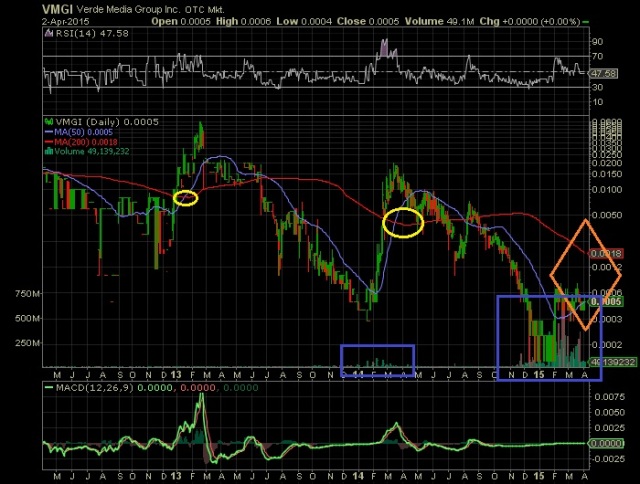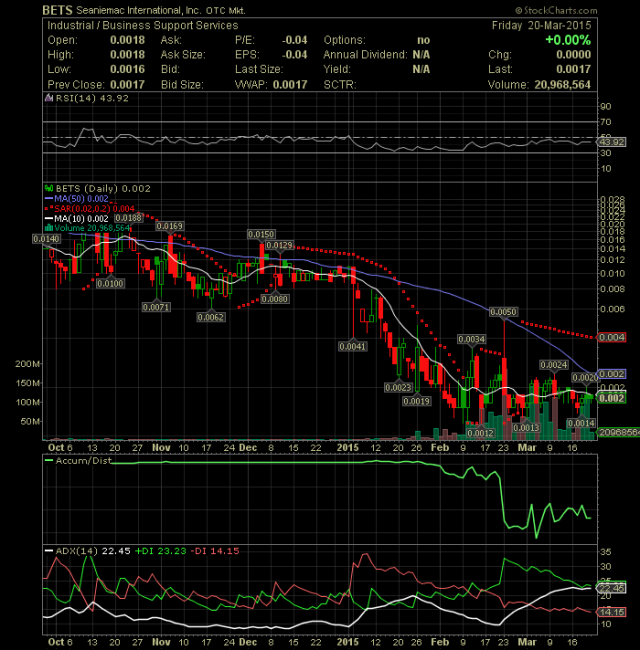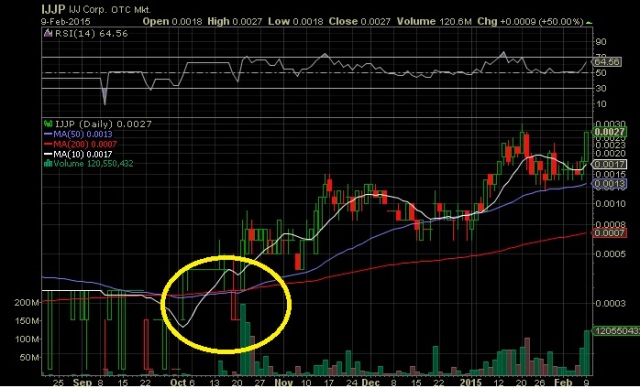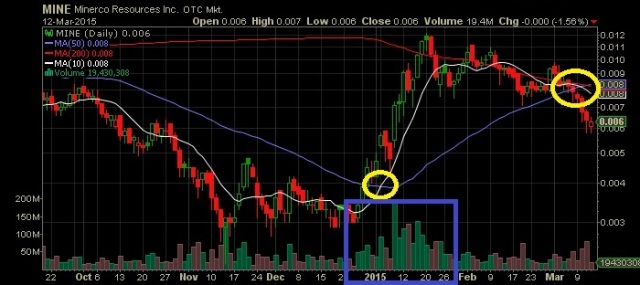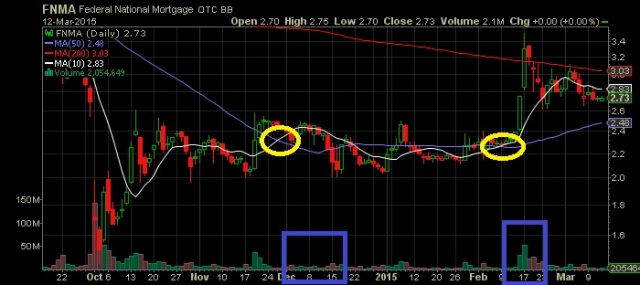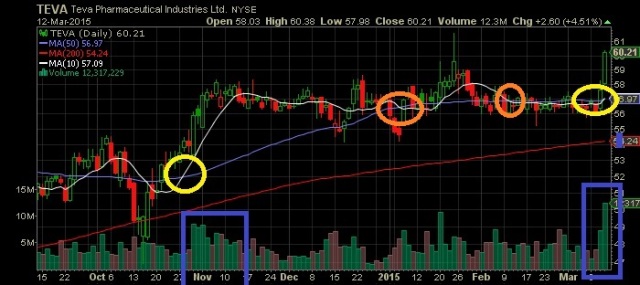Conventional wisdom suggests that when trading penny stocks it simply should just be a trade. However, sometimes you find those rare opportunities in which you can invest or at the very least hold long-term for greater gains with your trades. It is still wise, that when trading for the long term, especially in penny stocks, that we trade at multiple levels. What this means is that we buy at support and and sell at resistance. These support and resistance points increase as we ride the chart up an uptrend.
This is not always the case. But it is a safer way to trade. This blog post is going to analyze two penny stocks charts that are very similar. One has already established an uptrend, and one that is beginning to start an uptrend.
Although this blog has focused mainly on charting, this is not the only way to evaluate these penny stocks, especially when investing or trading for the long-term. A prudent trader must also research the CEO and look at the financials as well as news and press releases to see in what direction the company is actually going. And any information that is gathered during this due diligence process must also be fact checked through other sources and by consulting other traders that are well-established. However, every trader should make his or her own decision and not rely on another’s opinion to change his or her mind although taking consult is wise.
The first chart we are going to look at is for the stock ticker symbol $IJJP. This penny stock ticker symbol started in the trips and has since gathered steam and has been trading in the .003 to .006 range for the past few weeks. $IJJP has consolidated and is ready for its next leg.
Now let’s take a look at the chart and see what is going on here. Here is the $IJJP chart:
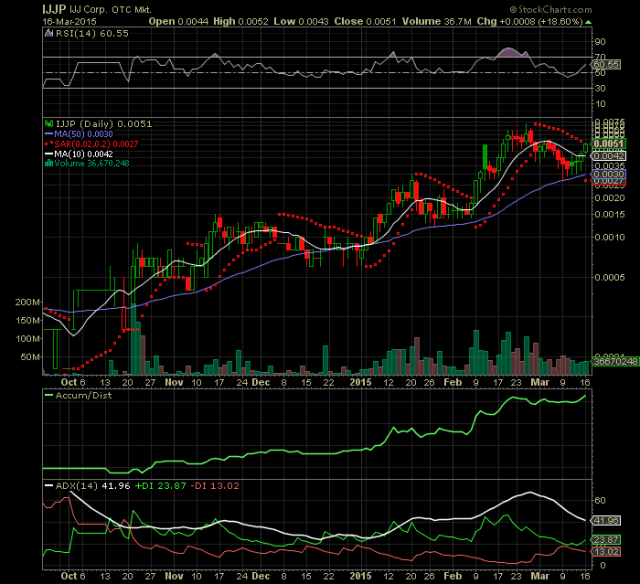
Now, before we analyze this chart, let’s also take a look at the other penny stock chart that is eerily similar.
Here is the chart for the penny stock ticker symbol $VMGI:
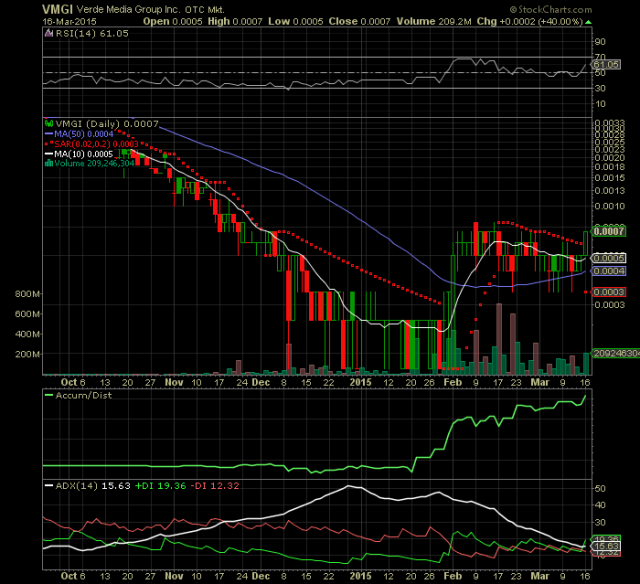 Before I show you the annotated charts, I’m going to give you a minute to see if you can see the pattern for yourself. Also before I show you the annotated charts, I’m going to go through and show you some of the news, press releases, and headlines as well as some of the financials that has caused traders and investors to jump into these companies.
Before I show you the annotated charts, I’m going to give you a minute to see if you can see the pattern for yourself. Also before I show you the annotated charts, I’m going to go through and show you some of the news, press releases, and headlines as well as some of the financials that has caused traders and investors to jump into these companies.
And then once we establish that these are companies that you should at the very lease take note of, we will then analyze a chart to look at the similarities between.
News and Press Releases for $IJJP:
To begin to analyze the penny stock $IJJP, we first must go back to January 19, 2012 when $IJJP released this news release informing investors that it had ceased selling 504 stock. 504 stock, in layman’s terms states that the company is exempt from federal registration as long as they sell up to $1,000,000 worth of stock in a given 12 month period. Ceasing a 504 stock sell is HUGE for the turn around of a failing company in the eyes of investors and traders. To learn more about 504 stock selling, click here.
Then we jump to December 19, 2014, a date on which $IJJP released this news release informing investors that it had closed on two deals bringing in $2 million and $100,000 yearly, respectively.
Then in the next few news releases, $IJJP released interviews with the CEO and spoke of deals being worked out with other companies to promote business and bring in revenue. These news releases can be seen on $IJJP’s page on OTCMarkets.com. The company also released multiple press releases informing investors of new hiers and how they are establishing an incredible roster of executives to head the new business model intended on turning around the company and making it profitable.
Then, the final piece to the puzzle, not only were deals done and revenue brought to the company, but $IJJP also hired an amazing staff to run the company and the icing on the cake: a buy back of hundreds of thousands of shares! You can find information on the number of shares that the company has bought back or intends to buy back on the company’s page on OTCMarkets.com.
Now, since we’ve establish that this company has taken the steps necessary, financially and executively, we can now analyze the chart to see how it stacks up and lines up with these deals.
Here is the annotated penny stock chart for $IJJP:
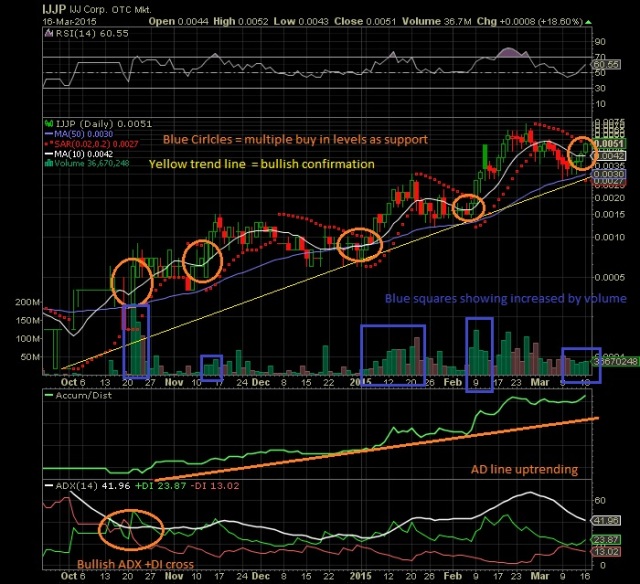 So, as you can see, the stock price has continued to increase as the press releases and news from this transparent company has informed the investors of its workings. The stock has turned into a text book bullish run and I predict the run will continue into pennies. Now, will this eventually crash? It is hard to say. But it does not seem like a normal pump and dump in the sense that the company is actually closing deals and bringing in revenue. The executives are not blowing smoke or making promises that they cannot deliver on. They have proven that they will make true of all their promises. And the stock price has reacted accordingly with the next leg up approach. And, according to the chart, the next leg is up and should push into penny land.
So, as you can see, the stock price has continued to increase as the press releases and news from this transparent company has informed the investors of its workings. The stock has turned into a text book bullish run and I predict the run will continue into pennies. Now, will this eventually crash? It is hard to say. But it does not seem like a normal pump and dump in the sense that the company is actually closing deals and bringing in revenue. The executives are not blowing smoke or making promises that they cannot deliver on. They have proven that they will make true of all their promises. And the stock price has reacted accordingly with the next leg up approach. And, according to the chart, the next leg is up and should push into penny land.
Financials
It cannot be determined what the financials of the company will look like in 2015 for they file in October. The net tangible assets have been positive from 2011 through 2014, however, the last three years, the net tangible assets have declined slightly. We, at Penny Stock Players, predict that the 2015 balance sheet, if all aspects of their press releases, news headlines, deals, share buy backs, and promises come to fruition, will be much more to the liking of investors and will show that $IJJP is beginning to establish itself as a reputable company.
News and Press Releases for $VMGI:
For $VMGI, we must first go way back to May 1st, 2014, which is very early since we are just now seeing price movement in the positive direction. On that date, there was this press release which informed investors of a major distributor for their BeautyJect products. Also in May, there were two other press releases which can be found on OTCMarkets.com, that indicated that they closed on deals in Asia for medical cannibals oil and omega 3.
The next few months, the penny stock company $VMGI released multiple press releases about BeautyJect and their Asia deals. And on November 19, 2014, they released a press release stating that they had hired a new CEO for their New York Agency division. You can find the press release here.
On December 23, 2014, $VMGI announced that they had signed a contract with Port City Coffee Roasters. You can find that press release here.
Then a huge press release was released on January 20, 2015 asserting an asset valuation for their BeautyJect division. The asset valuation comes to 175 million dollars and you can find that press release here.
All of these press releases and news can be found on OTCMarkets.com under the company’s page. So, we will now just headline these press releases for you. On the dates, February 2nd and 6th of 2015, $VMGI informed investors that they are moving forward with a reality TV series called “Green Rusher” which details the marijuana industry and will bring 100% of the revenues to the company.
Then on February 17th and March 16th of 2015, the CEO, Mr. William Veve, hosted a conference call for its investors to first talk about the company and its deals, and second to allow investors to ask any questions.
More information from the press releases: There are two additions to the company, Mr. Aaron Courseault, who you can find out about on IMDB.com, and also Mr. Kevin Harrington. Additionally, accompanying the BeautyJect deal is a share buy back. There is also NO reverse split planned. The company has become extremely transparent just like $IJJP by not only having the CEO give monthly conference calls and interviews, but also they host a Sunday blog where the CEO details the week’s progress. And like $IJJP, $VMGI is in the process of getting their financials audited. This means more transparency, current status with the SEC, and more confidence amongst shareholders.
So, as you can see, the parallels between $IJJP and $VMGI are unprecedented and, we at Penny Stock Players, assert that the price per share will also run parallel. As noted above, it has already started.
Now, lets look at the annotated chart for the penny stock $VMGI:
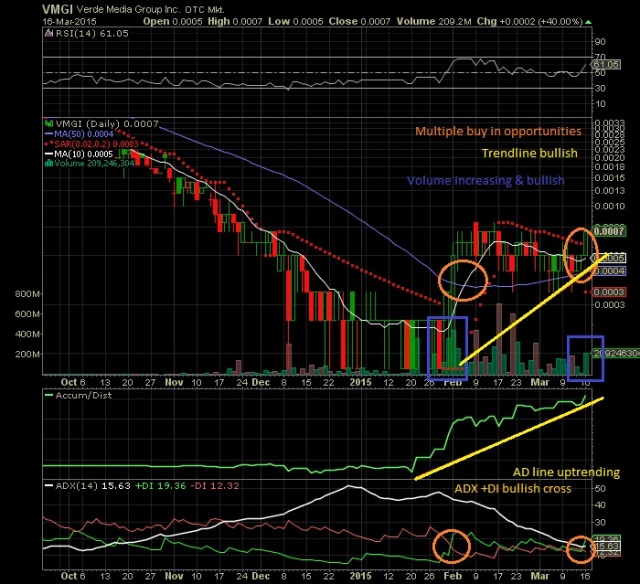 $VMGI is under major accumulation and has effectively begun an upward trend with the first leg in place. The #VMGI chart looks very similar to the #IJJP chart. The chart predicts that an uptrend and long term run is imminent and as long as $VMGI remains transparent with their shareholders and remains true to their word, the price will continue to react positively. *NOTE: $VMGI’s chart has only just finished its FIRST leg. Look only at the forming uptrend and NOT at the previous decline.
$VMGI is under major accumulation and has effectively begun an upward trend with the first leg in place. The #VMGI chart looks very similar to the #IJJP chart. The chart predicts that an uptrend and long term run is imminent and as long as $VMGI remains transparent with their shareholders and remains true to their word, the price will continue to react positively. *NOTE: $VMGI’s chart has only just finished its FIRST leg. Look only at the forming uptrend and NOT at the previous decline.
Financials
As with $IJJP, $VMGI cannot be accurately assessed financially. Their last file date was in 2013. Therefore, we must wait for the audited financials to be released. However, since they are still in the infancy of their current deals, it is unfounded to suspect a great current financial statement. The 2016 financial statement will reflect the 2015 revenue brought to the company via BeautyJect, Green Rusher, their Rum product and many other divisions. However, once the deals are finalized, the price will react accordingly regardless of their SEC filed financials; which will just be the icing on the cake for $VMGI in the future. By the way, $VMGI seems to file in December, however, through Mr. William Veve’s current conference call on March 16, 2015, new audited financials will be released in April of 2015.
So, what is the point of all this?
If a trader did his due diligence and saw what was coming for $IJJP, even if he did not trade it, he would now be afforded an amazing opportunity to trade $VMGI and make a nice buck. She will also be able to use the previously laid out blueprint to find other trades that will also afford a great opportunity. Remember though, haste makes waste. So if you are trading for the longer term as a potential penny stocks investor, make sure that the stars all align and that you are dealing with honest transparent companies with likewise CEOs and executives or you risk being burned in the process.
Key Points: News, Press Releases, Financials, Charts, and Due Diligence on Executives.
If you would like to connect with Penny Stock Players, please, like our Facebook Page.
Additionally, if you would like to learn more about trading penny stocks, including research, due diligence, charting, level 2, trading rules and guidelines all in an easy to read story form, check out our book by clicking here.
If you enjoyed this post, don’t forget to share it with your penny stock trading friends. :))
